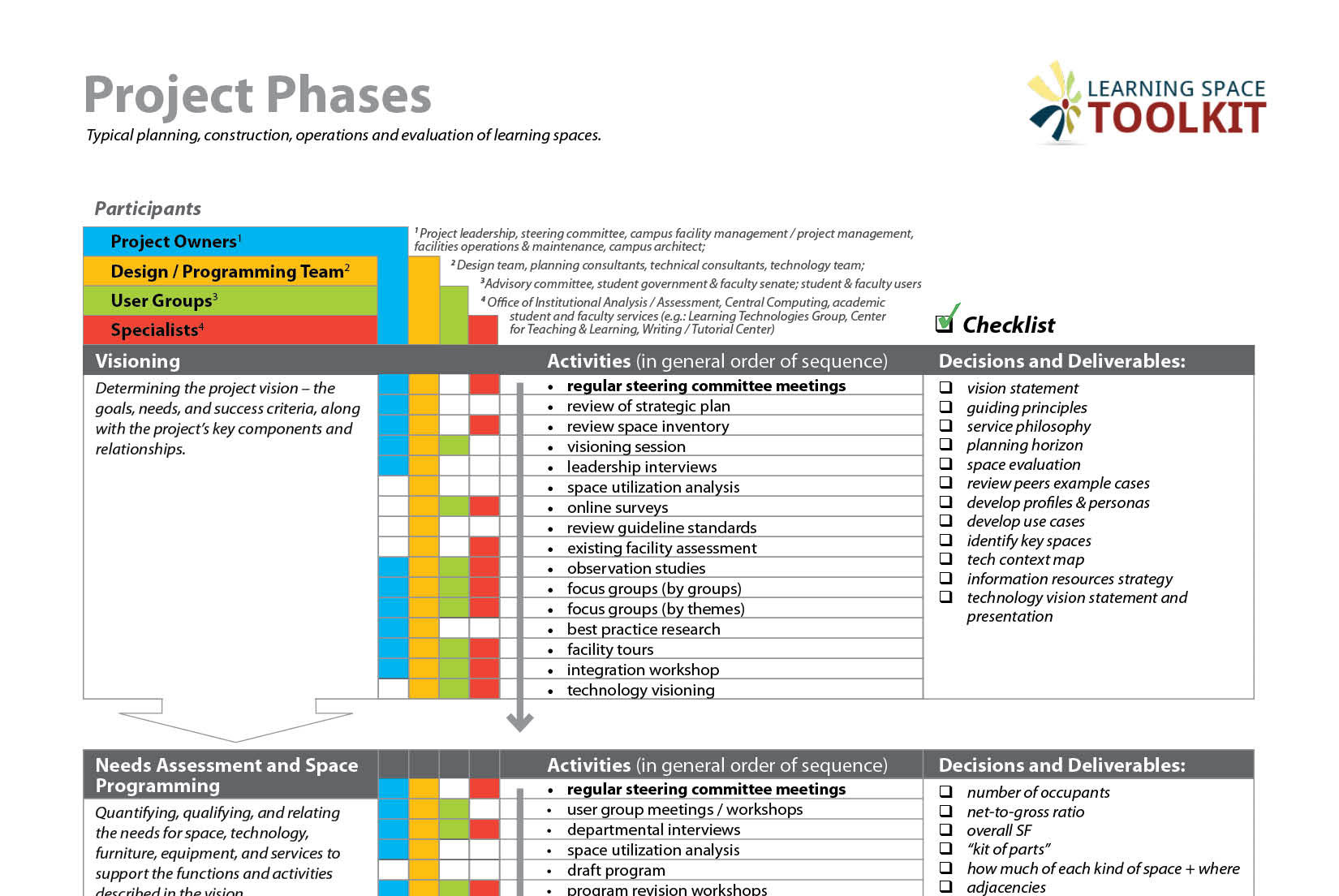Project Phases
It is crucial to get the process right for the planning, construction, operation, and evaluation of learning spaces. Though the scale of projects, the goals, and the campus contexts may vary, there are many aspects that successful projects have in common. Our process map captures these elements, depicting the phases, activities, participants, and decisions / deliverables for a major learning space project, with the idea that institutions can look at this large-scale, “ideal” case and scale-back to fit their needs. The process map identifies six key phases for a project: visioning, programming, conceptual design, detailed design, construction, and operation / assessment.
It then illustrates some of the typical activities for each phase, such as regular Project Steering Committee Meetings. It also suggests which of four kinds of stakeholders need to be involved in which activities: Steering Committee, Design / Programming Team, User Groups, and specialists on campus such as IT, Center for Teaching and Learning, Facilities, and Libraries. For each phase, a set of deliverables to be produced and decisions to be made are also suggested. Institutions can use this information to structure the process that works best for them, based on the scale, budget, scale, and context.
Example Project Phases – Downloadable document outlining the typical planning, construction, operations and evaluation of learning spaces.

Example Project Phases
